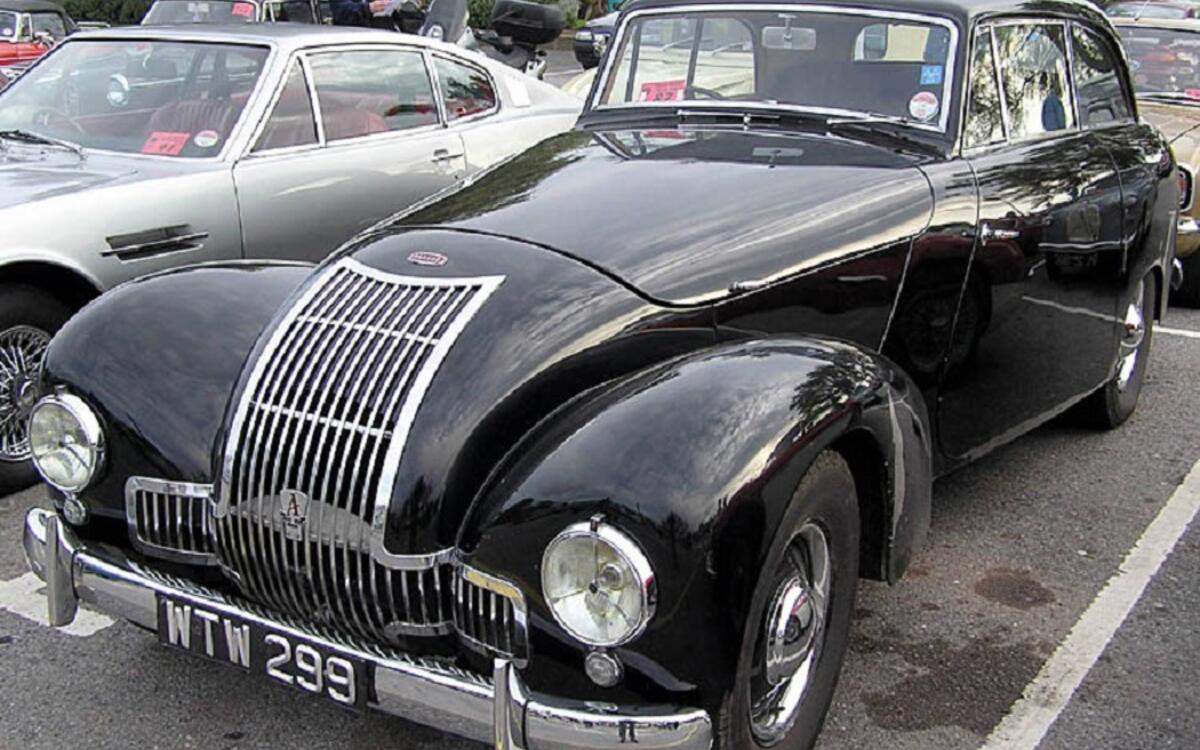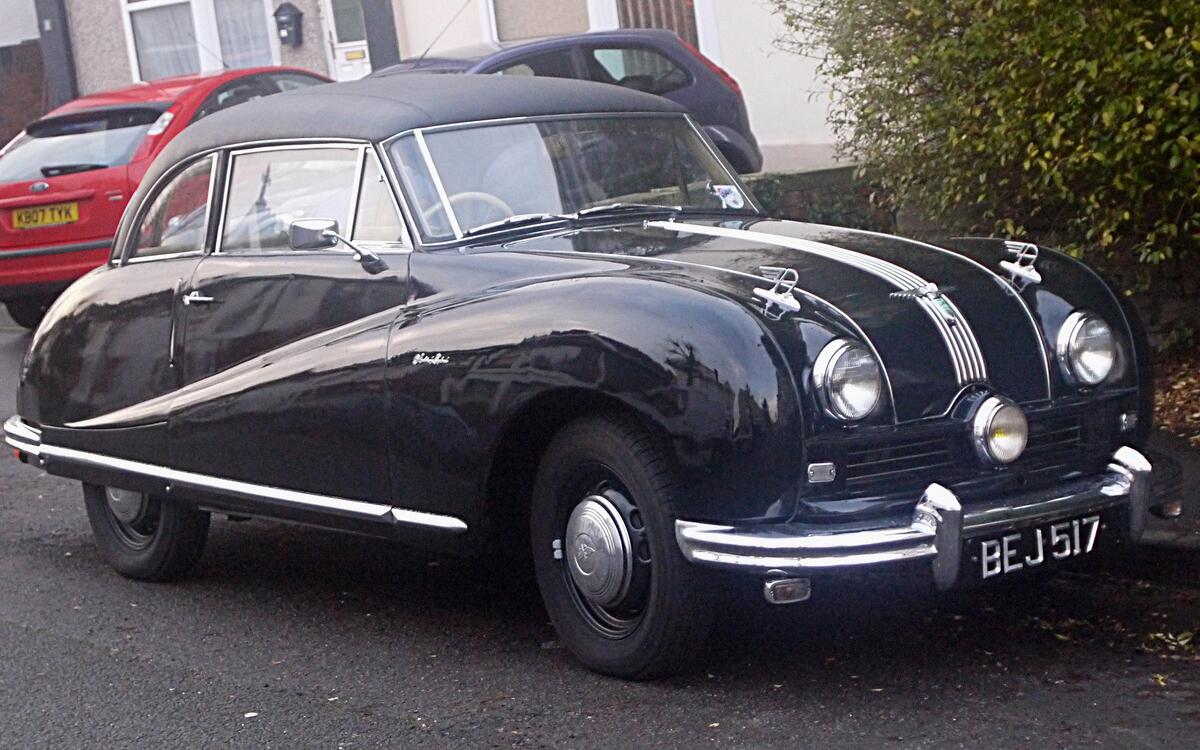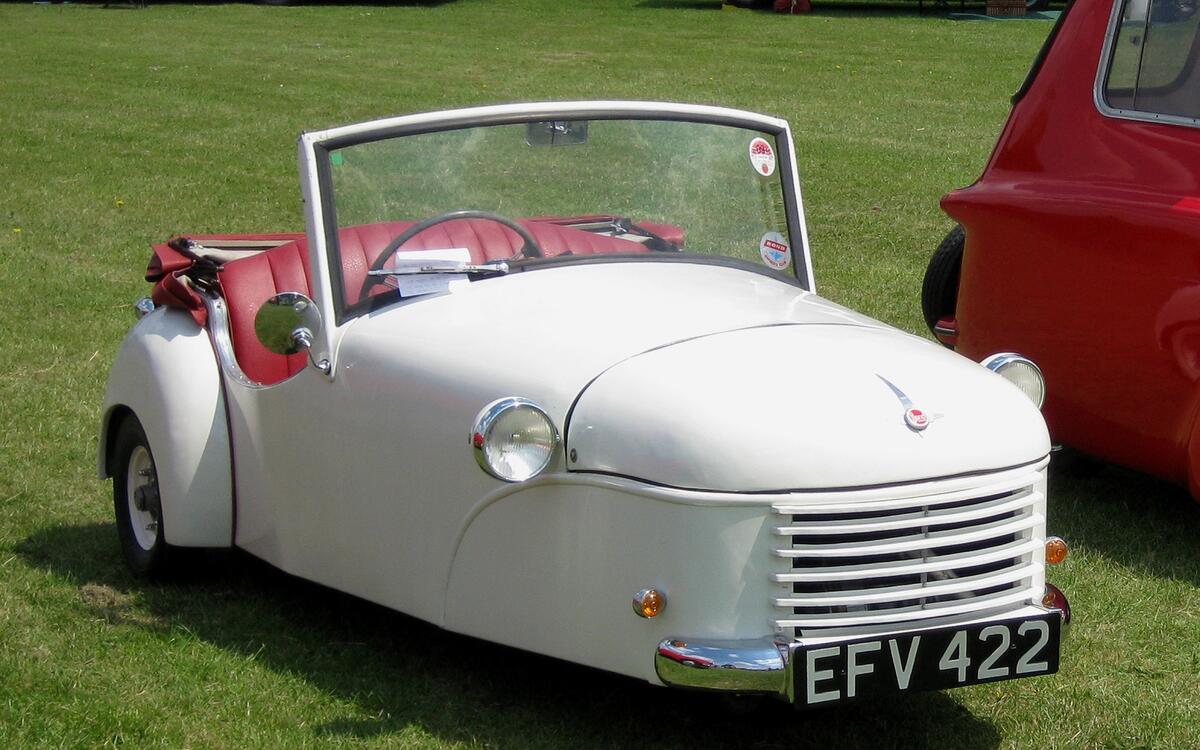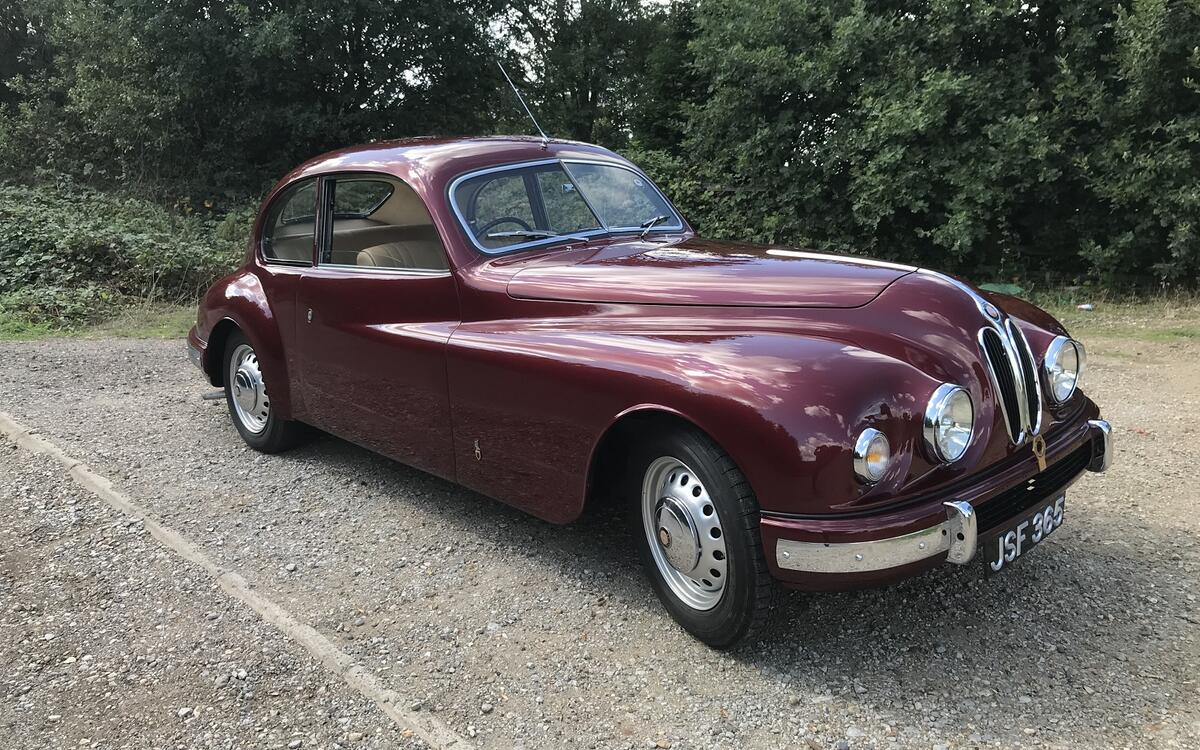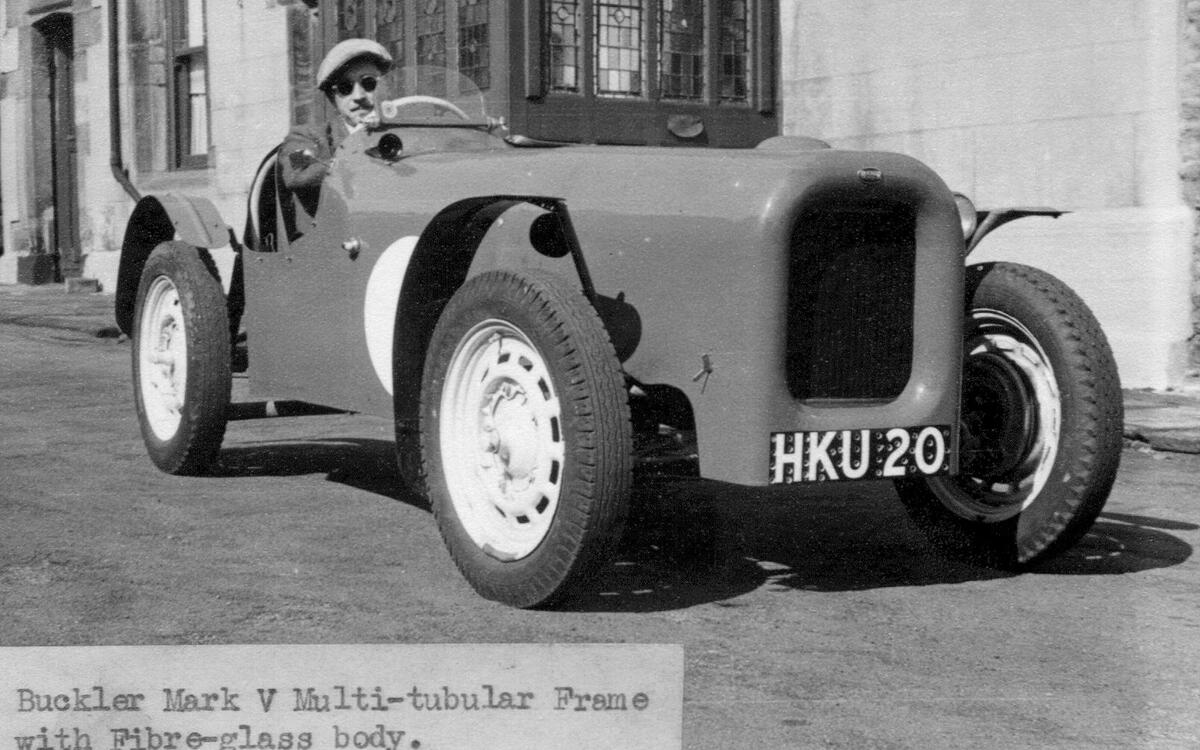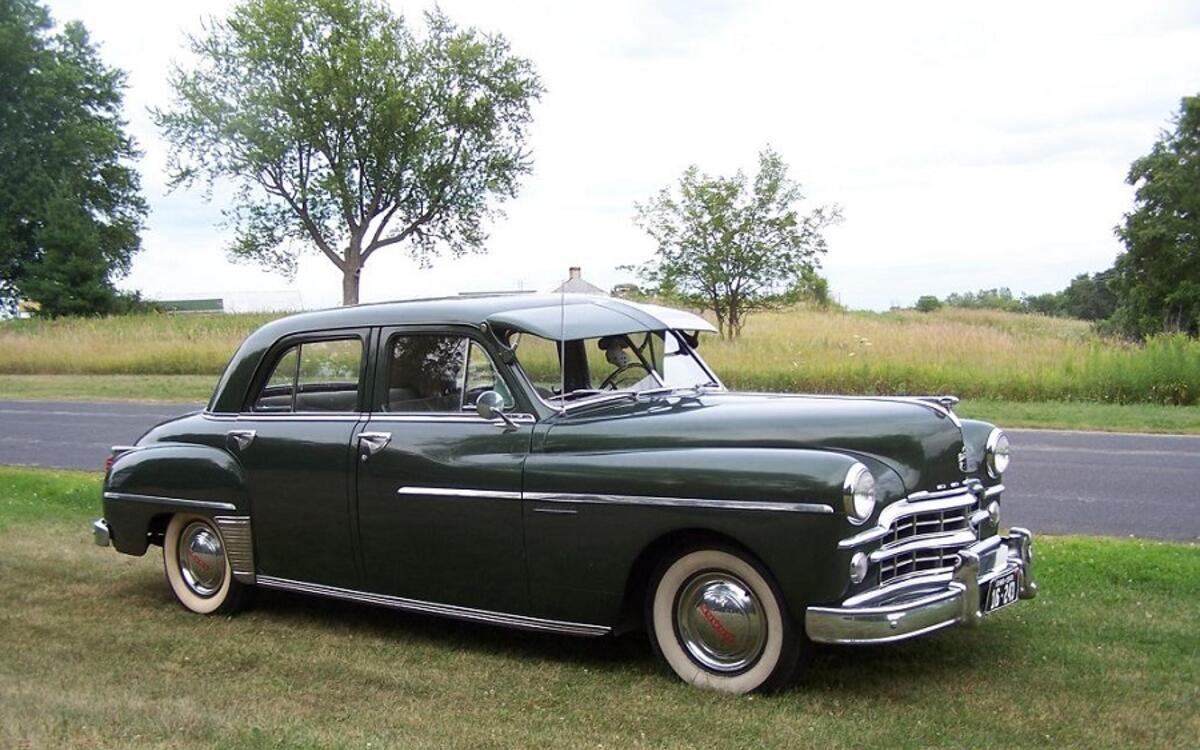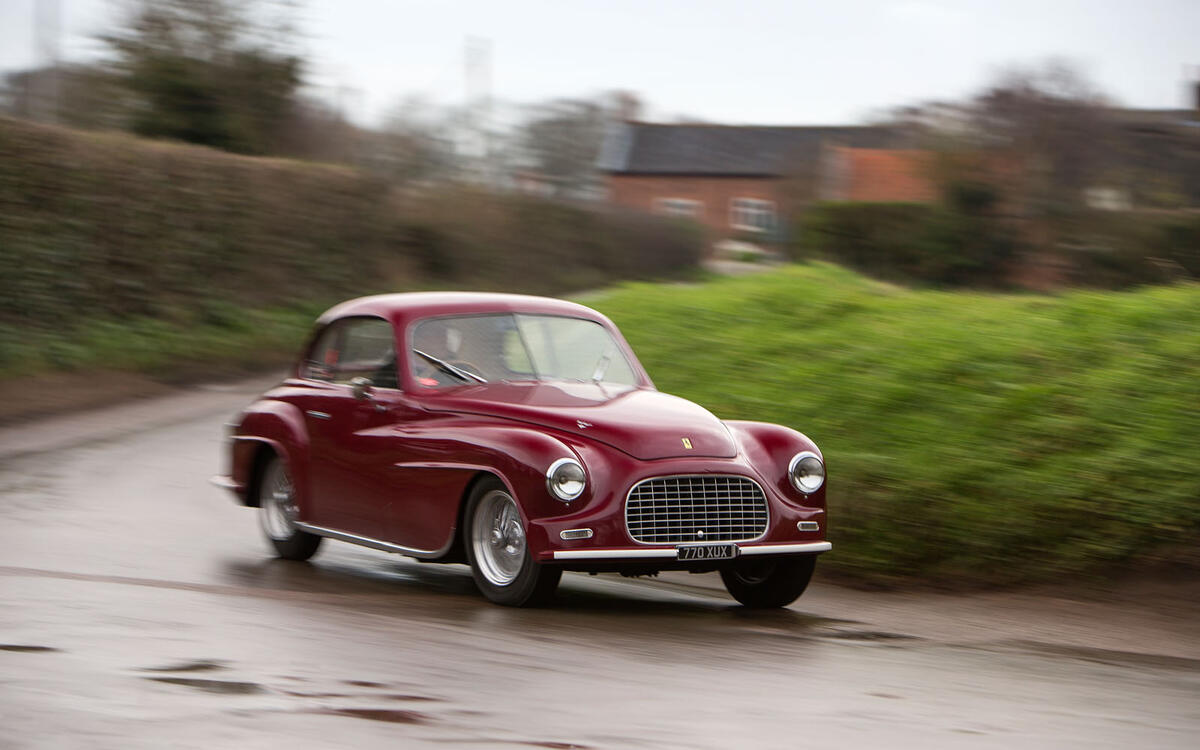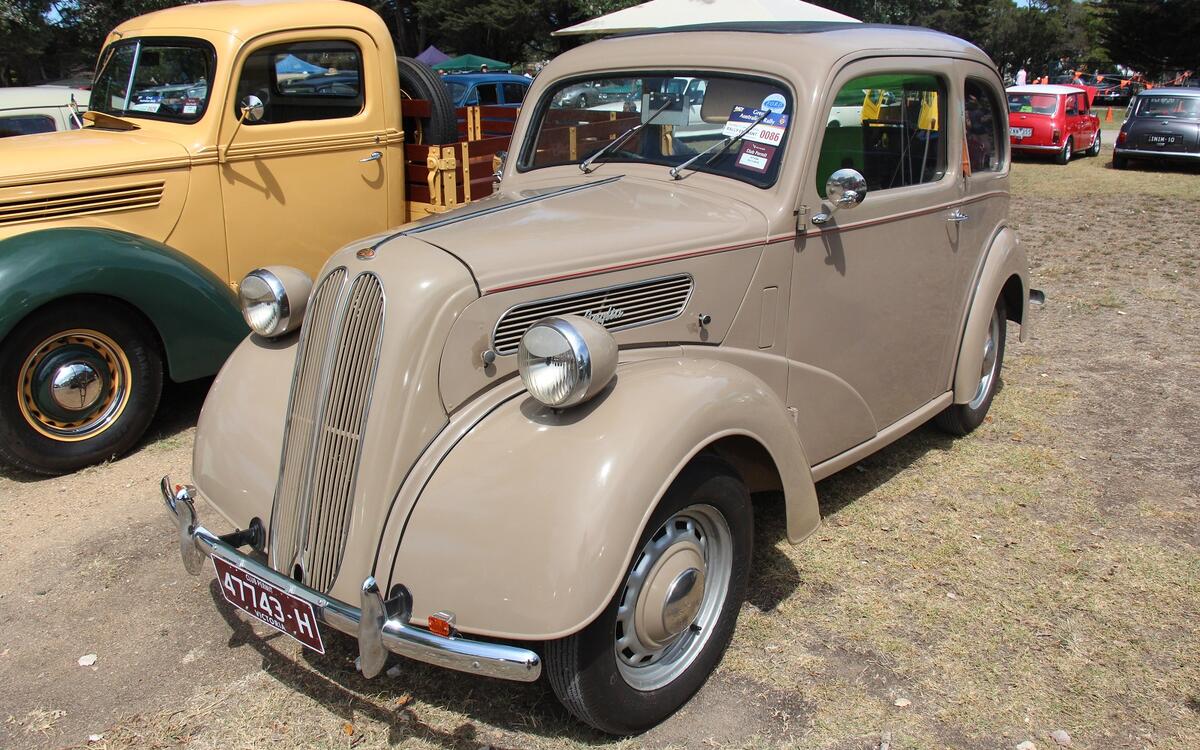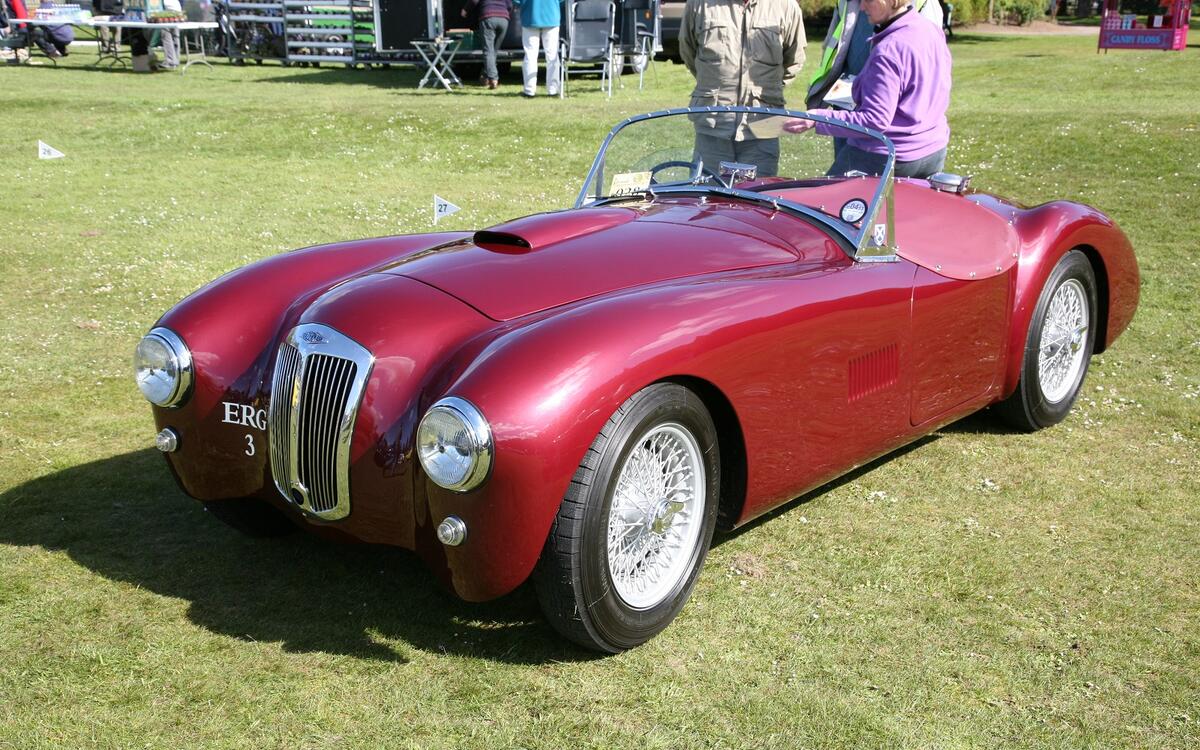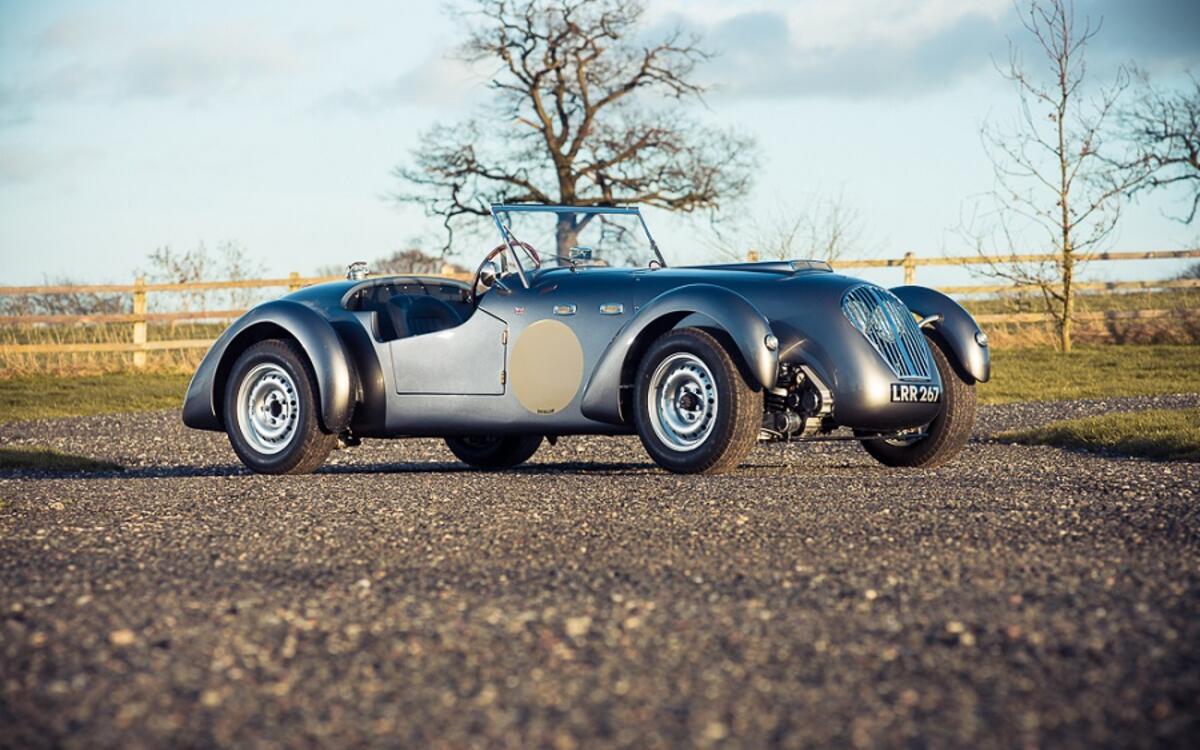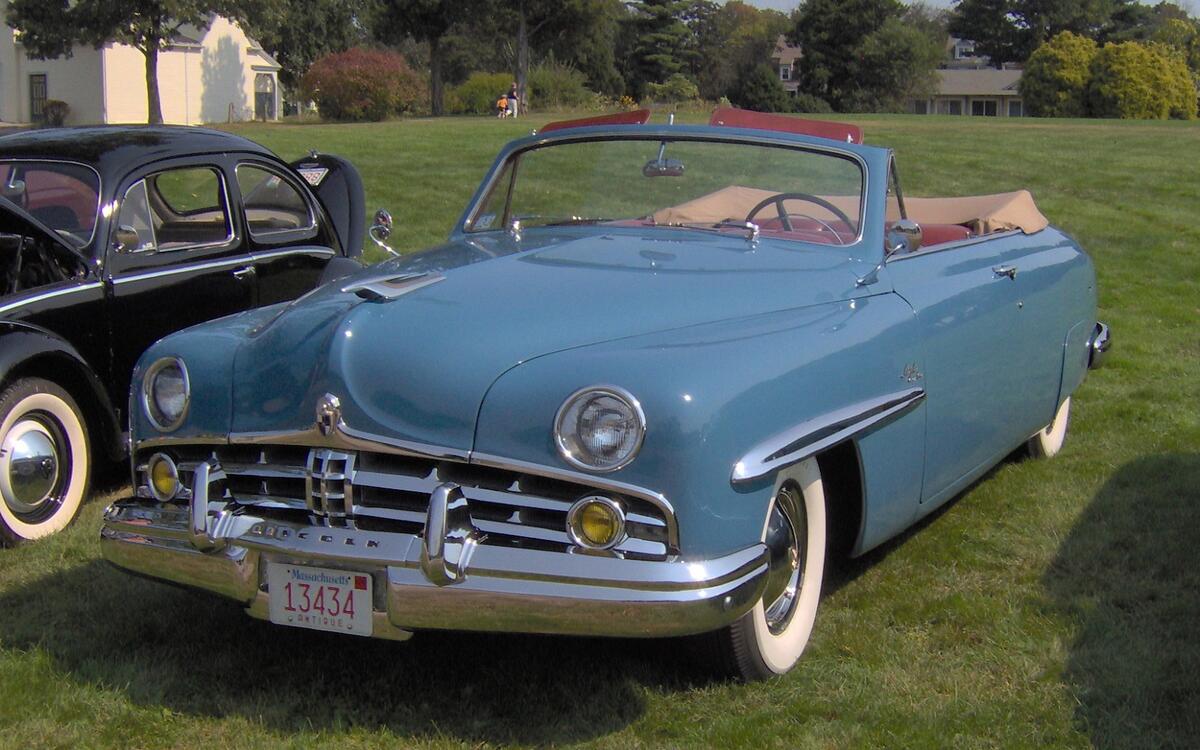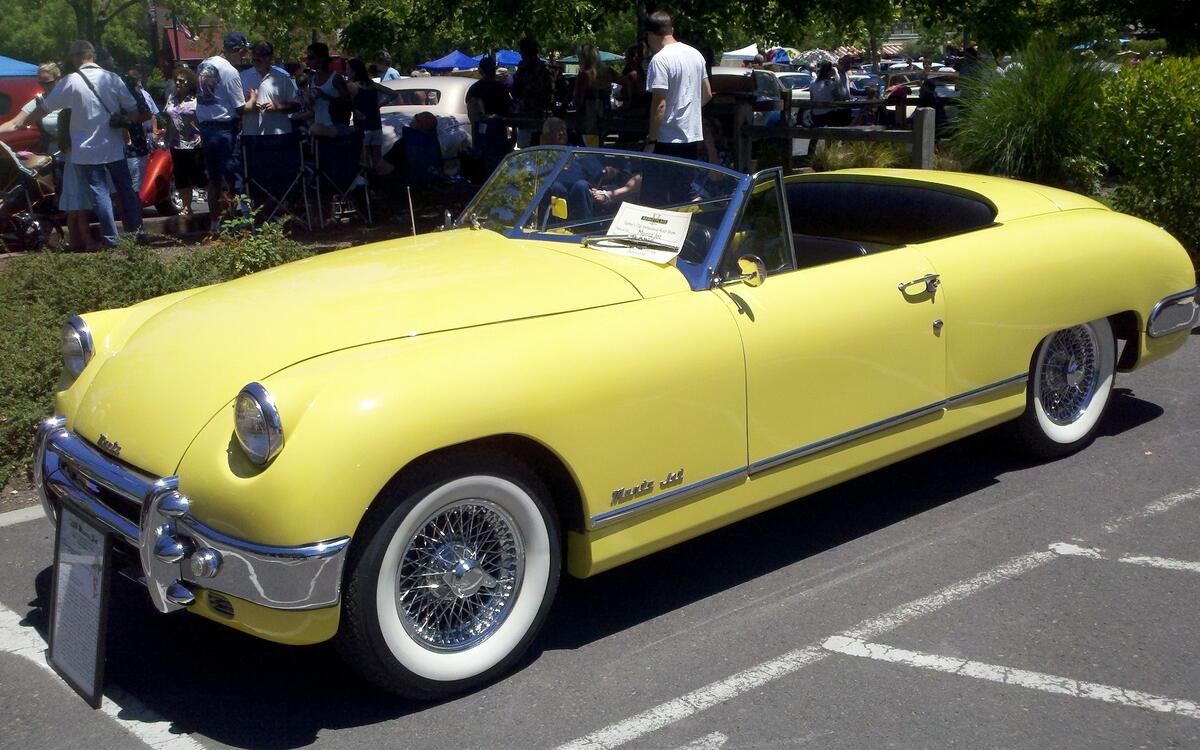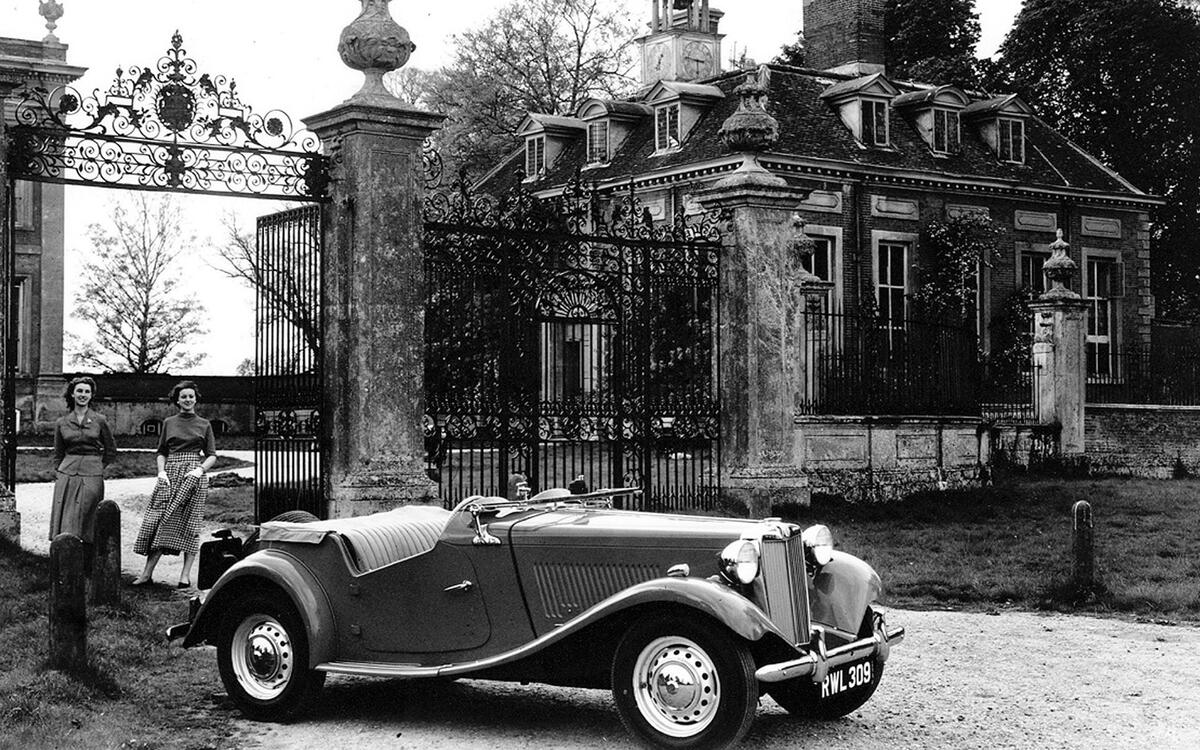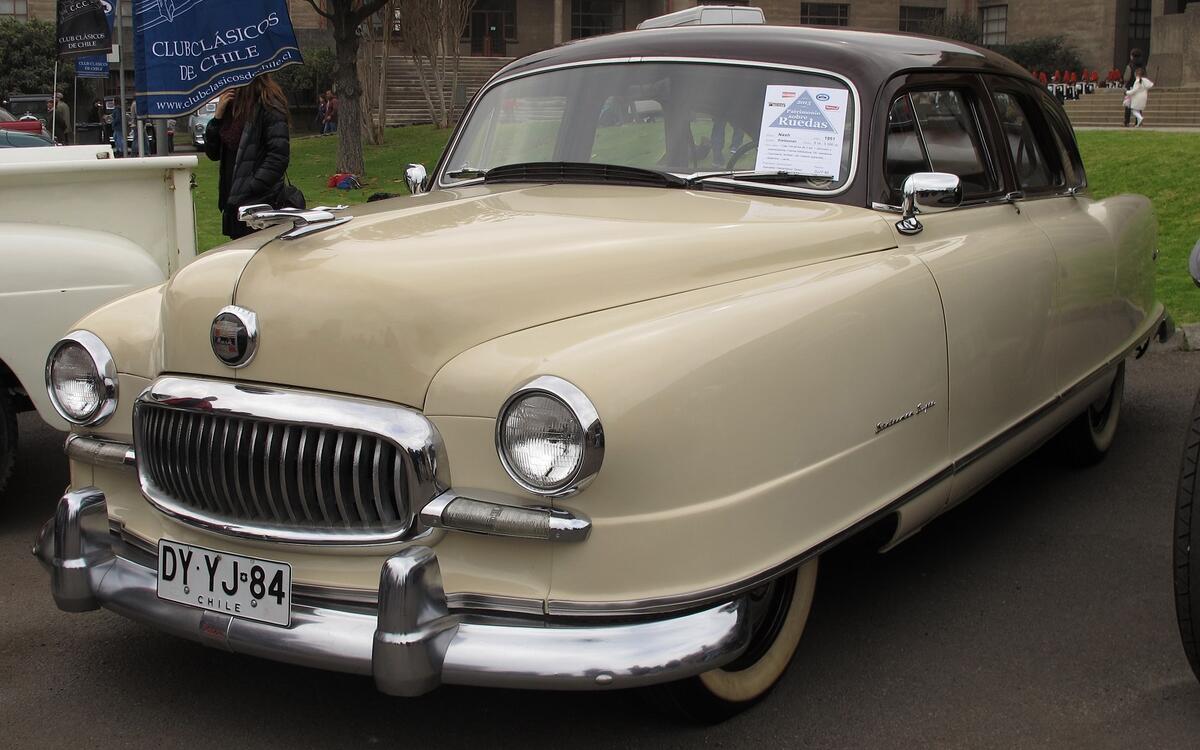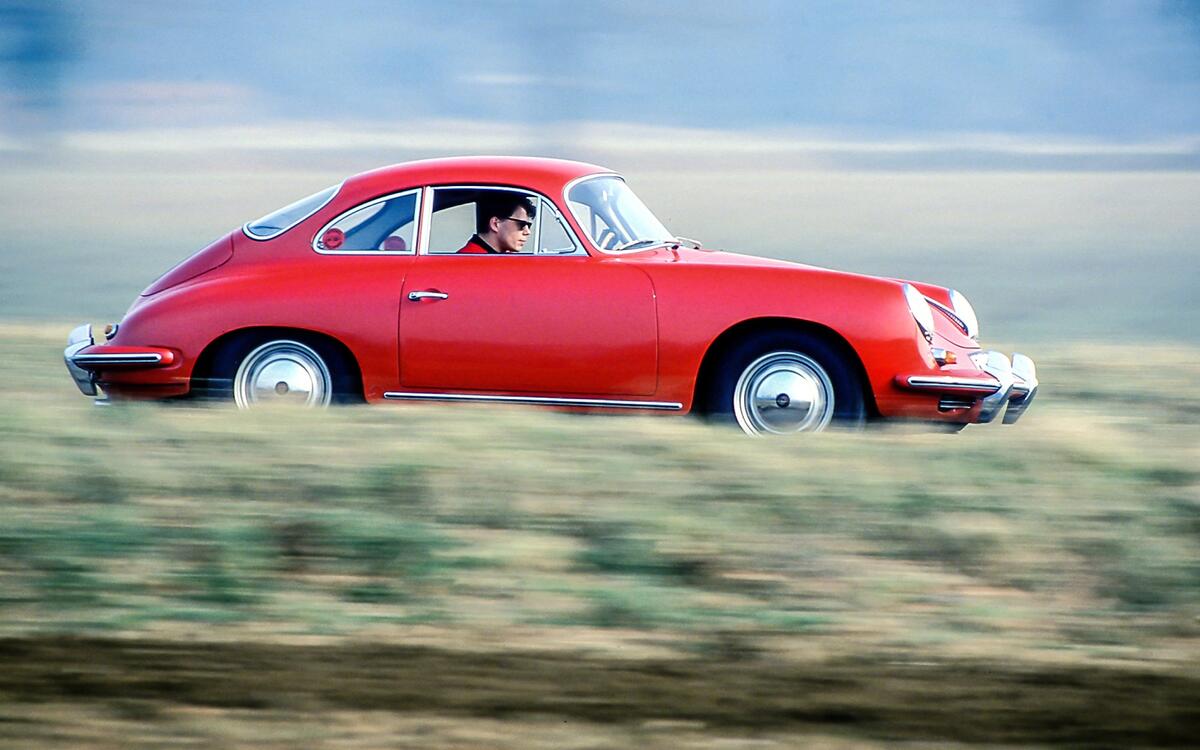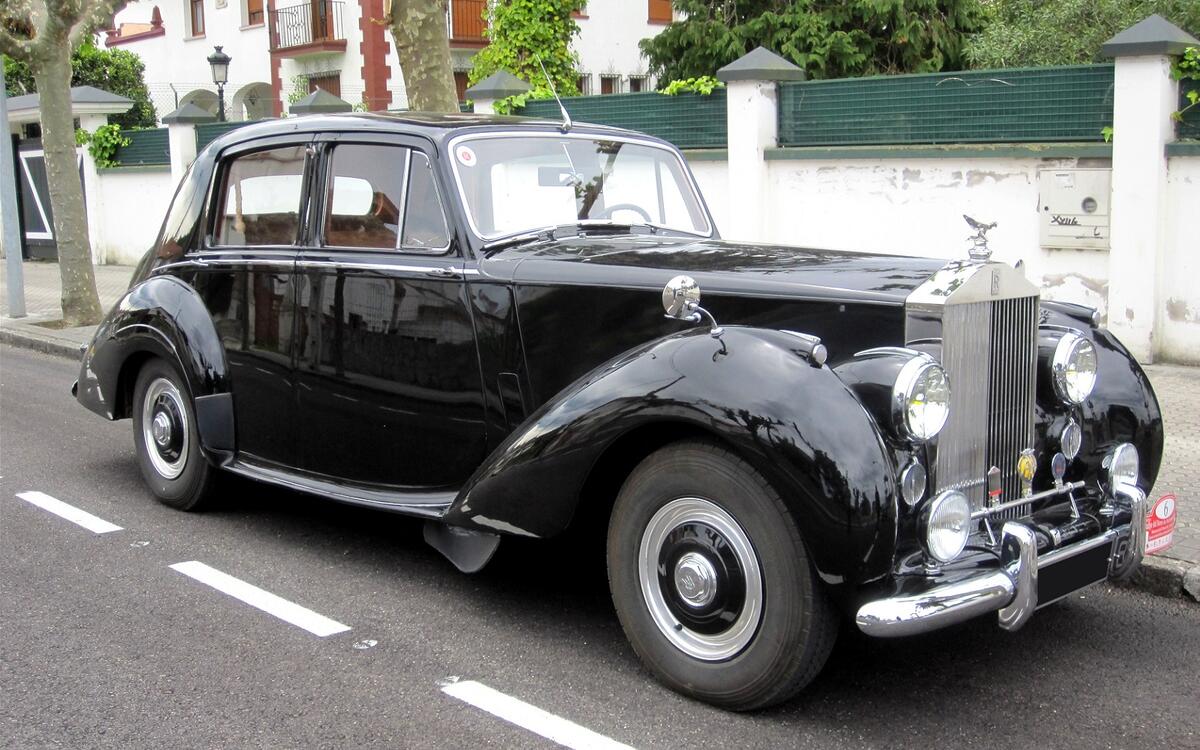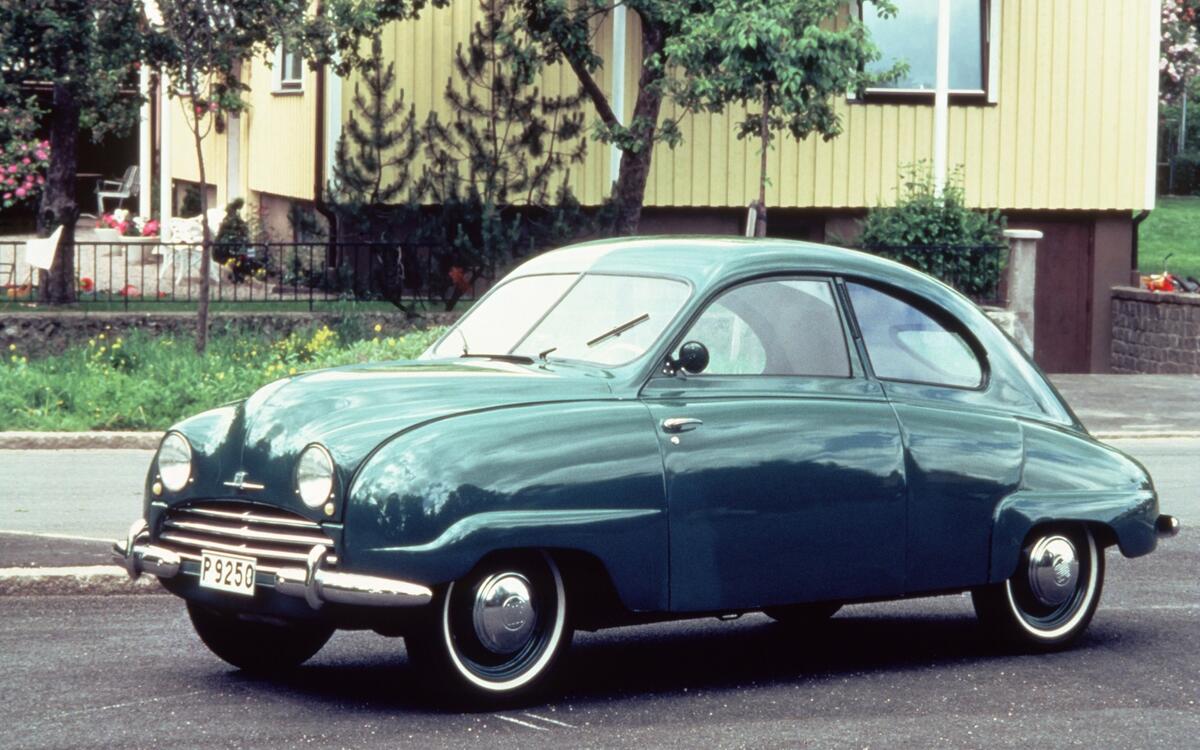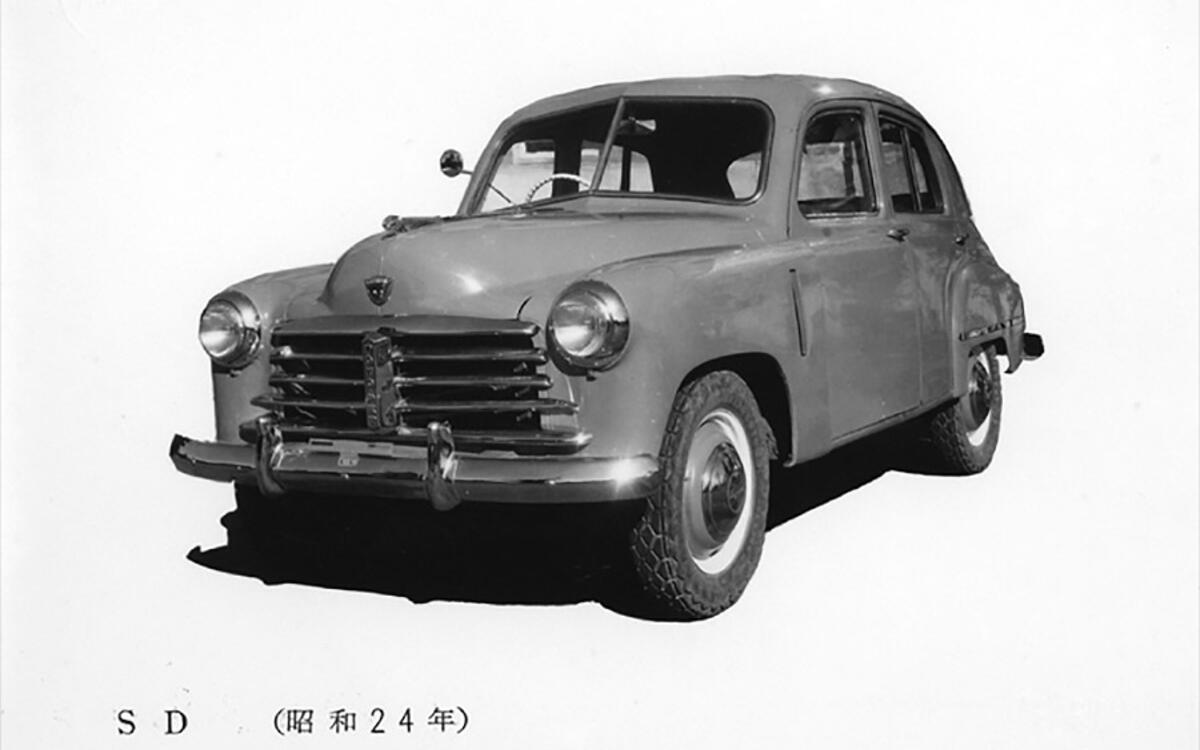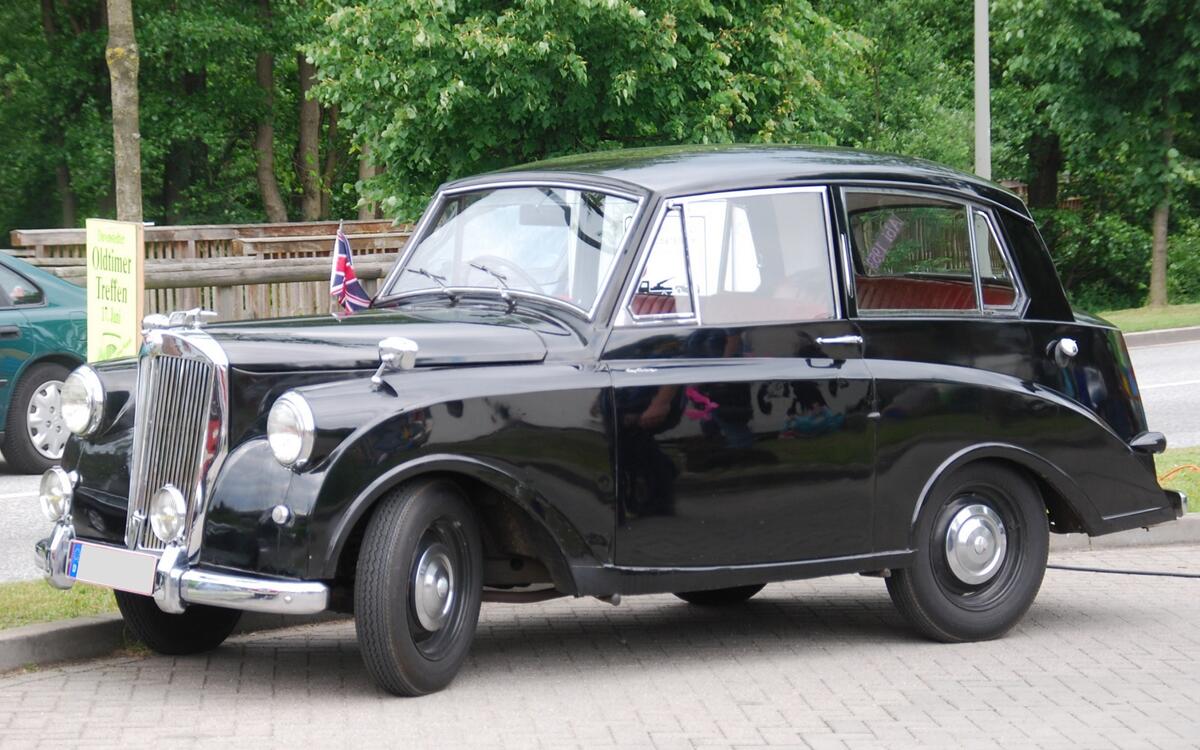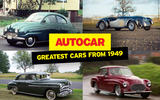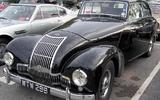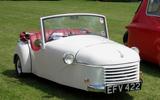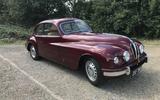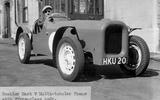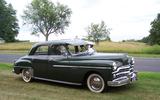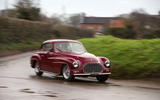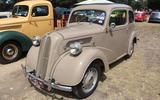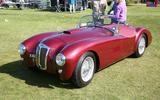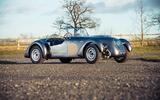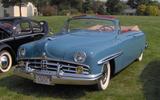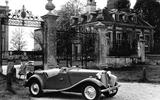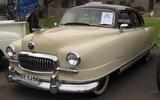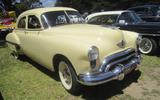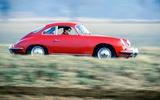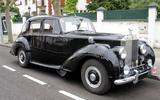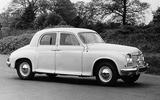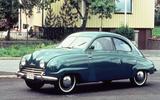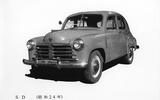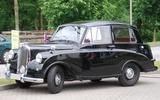 Slide of
Slide of
After a flurry of big name launches the previous year, 1949 might have been a damp squib for new cars.
This was the year that saw some revolutionary changes around the world, from the first road-going Ferrari model being launched to Rolls-Royce introducing a standardised body for the first time.
Vehicle styling was evolving as pre-war separate wings gave way to fully enclosed shapes.
It echoed the mood of the car-buying public as they sought to forget the war years and enjoy their emerging prosperity.
So, here’s a look at the best of what 1949 had to offer...
 Slide of
Slide of
Allard P1
Sydney Allard was a visionary in many ways, being one of the first to match American V8 muscle to a British-built chassis and body.
The P1 was meant to take his eponymous company more into the mainstream with its closed two-door bodywork, but its competition pedigree was clearly obvious, not least in its grunty engine taken from a Ford or Mercury.
Built in Clapham, south London, the Allard P1 showed there was a burgeoning appetite for more glamorous cars as the deprivations of the war years began to fade.
Allard grasped this and used the P1 in competition to further boost its appeal and remains the only person in the history of the Monte Carlo Rally to win in a car bearing his own name.
 Slide of
Slide of
Austin A90 Atlantic
Britain may have been on the winning side in World War Two, but it had left the country flat broke with enormous debts.
This led to an ‘export or die’ ethos of the immediate post-war years led to many British car makers trying their hand at appealing to the lucrative US market.
Austin’s effort was the A90 Atlantic, first launched as a convertible and then a coupe.
Sadly, neither was a success in the US or at home as the engine was deemed too small in America and too pricey in the UK.
Details such as the twin flying ‘A’ Austin badges and cyclops spot lamps are now attractively period to look at, but few were tempted in period.
Around 8000 were built in total, but corrosion has killed nearly all of them, with just 60 or estimated to be left globally.
However, the Atlantic did leave a legacy and make its mark as the car that provided the engine and gearbox for the Austin-Healey 100/4 that arrived in 1954.
 Slide of
Slide of
Bond Minicar
The motor car was evolving in many directions in the post-war years and Laurie Bond reckoned his small, light Minicar was the way forward.
He was on the right track, offering an affordable machine that was capable of more than 100mpg thanks to its 122cc motorcycle engine at a time when fuel rationing was still in place.
The trouble was, the Minicar arrived as prosperity was rising and rivals such as the Morris Minor had four wheels rather than the Bond’s three.
As a result, the Minicar remained a curio, but it found some favour during the fuel shortages caused by the Suez crisis and stayed in production until 1965.
 Slide of
Slide of
Bristol 401
As you’d expect of a company rooted in building aeroplanes, the Bristol 401 was produced to exacting standards. That included refining the body’s shape in a wind tunnel, which made it one of the most aerodynamic cars of its time.
This was just as well as the 2.0-litre straight-six BMW-derived motor punted out a mere 85bhp, though that powered this Bristol to 97mph flat out.
Always a bespoke choice, the 401 reached a production total of 611 to make it one of the most numerous Bristol models.
It’s also enjoyed a very high survival rate thanks to its aluminium bodywork and stringent build quality, so now enjoys prized status as a classic car.
 Slide of
Slide of
Buckler MkV
Derek Buckler can justifiably lay claim to starting off the whole kit car industry in the UK and the MkV stands as the model that straddled component and production sales.
Build it yourself and you avoided purchase taxes or you could pick one up from the factory with an 1172cc Ford engine for nippy performance.
The MkV proved one of the most popular models made by Buckler and it got its name because the company founder didn’t want buyers to think they were dealing with an untried company.
Buckler also supplied tuning bits to make the MkV go faster and handle better, which aided its appeal to the growing number of drivers trying their hand at motorsport.
 Slide of
Slide of
Dodge Coronet
The Coronet badge enjoyed a long lifespan and it started in 1949 when the model introduced Dodge’s new body styles.
They moved the game on from the previous pre-war shapes with enclosed headlights, curvy wings and lower-slung bodies.
Customers loved the looks and the Coronet was a success in sedan, station wagon, coupe and even limousine shapes.
There was still some parsimony in the design of the Coronet, however, with its 230cu in (3.8-litre) straight-six engine rather than a V8.
With 103bhp on hand, it could see the Coronet up to 90mph, while buyers could also opt for a three-speed automatic gearbox with a foot-operated selector.
 Slide of
Slide of
Ferrari 166 Inter
Until 1949, Ferrari had only built racing cars, even if some of them could be used on the road. The 166 Inter changed that and, with it, the whole future of the firm.
The Inter still used the 166 S racer as its starting point and the 2.0-litre V12 designed by Colombo was an exotic motor compared to those being used in most cars of the period.
Several different coachbuilders constructed bodies on the 166 Inter chassis.
The majority were made by Touring of Milan, but others came up with shapes that ranged from sleek to, well, a bit dumpy.
Most were closed coupes and they are much sought-after in the classic car world now as the first production Ferrari model.
 Slide of
Slide of
Ford Anglia
The E93A Ford Anglia was the Fiesta of its day and put many people behind the wheel of a car for the first time.
It was a good choice, too, as the Anglia was decent to drive compared to most of the stodgy opposition.
This fact wasn’t lost on tuning firms and the blossoming kit car makers who used the Anglia’s chassis and engine as the basis for many of their sports cars.
From launch in 1949 to the end of its life in 1953, the E93A totted up 108,000 sales, making it one of the best sellers in the UK.
However, by the end of its production, it already felt outdated as competitors like the Morris Minor and Standard 8 developed into altogether more modern machines.
 Slide of
Slide of
Ford Custom
The humble Ford Custom holds an important spot in the history of US cars as it was the first all-new design to be launched post-war from any of the Big Three players.
It was key to Ford’s prestige that it was first out of the blocks after it was seen to lag behind in model launches prior to the Second World War.
Ford carried over the engines from the outgoing Custom, which included a 226cu in (3.7-litre) six-cylinder and 239cu in (3.9-litre) V8.
Otherwise, it was all-new and buyers had a huge choice in body shape, including two- and four-door sedan, coupe, convertible and a station wagon estate.
With advanced new suspension and attractive styling, the Custom was a big seller and its influence was seen in many European models of the 1950s, including Ford’s own Consul and Zodiac ranges.
 Slide of
Slide of
Frazer Nash Mille Miglia
Frazer Nash cars cast a huge a shadow thanks to their competition successes before and after the Second World War.
In an attempt to cash in on this, the Mille Miglia was launched, with its name conjuring up drives in the famous Italian road race.
The only trouble was few could afford them and only 12 Mille Miglias were made.
Such lowly sales figures were not for a want of performance as the car was based on the superb Le Mans Replica model, albeit with a slightly detuned engine.
Even so, it offered vivid acceleration and a great drive. However, it was always seen as an oddity, not helped by the bulge in the left-hand wing for the spare wheel that was mounted in the side panel.
 Slide of
Slide of
Healey Silverstone
Donald Healey was an ace driver, manufacturer and wheeler-dealer, so it was no surprise the Silverstone was a great car.
It offered strong performance, excellent handling and was instantly successful in club motorsport. However, Healey’s constant deal-making meant it also went out of production too soon as he concentrated on making the Nash-Healey.
The pared back Silverstone was a good race car, but Healey had also thought about it as a road car.
In a bid to save weight, the car was designed with the spare wheel poking from the rear so it doubled as the back bumper. A neat solution that could also be quickly removed to lighten the car for weekend motorsport.
 Slide of
Slide of
Lincoln EL
The 1949 model year Lincoln EL was a car aimed at those wanting the best in luxury and comfort.
A full-size model, it could be ordered as a four-door sedan, convertible or in two coupe styles and each with a streamlined appearance.
The sedan was notable for its rear-hinged back doors, which was a Lincoln trademark that persisted into the 1960s.
All proved popular with US buyers looking for something forward-thinking and the EL provided that with its sleek styling.
Under the hood, the EL broke with Lincoln tradition by using a V8 motor in place of the expected V12.
Few were put off by the rationalisation by parent company Ford as the 336cu in (5.5-litre) V8 was not short on power nor torque.
 Slide of
Slide of
Muntz Jet
With a name like this, the Muntz Jet was never going to be a shy and retiring kind of car.
It was billed as a ‘personal luxury automobile’ and the company was run by the Illinoisan Earl ‘Madman’ Muntz, so buyers had fair warning to expect something out of the ordinary when choosing a Jet.
What they got was a convertible with removeable hard top and streamlined styling for the aluminium body that was much lower-slung than most cars of the time.
Under the bonnet was either a Cadillac or Ford V8 and both offered smooth, fast driving.
However, a combination of excessive production costs, no dealer network and trying to take on the established luxury makers saw the Jet project stall after only 198 cars were made.
Not even famous customers like Mickey Rooney and Grace Kelly could bring the Muntz back from this financial brink.
 Slide of
Slide of
MG TD
Even when it was launched, the MG TD seemed antiquated compared to many of the full-bodied sports cars arriving on the scene.
Internal wrangling as part of British Motor Corporation (BMC) meant the TD soldiered on to 1953 when the TF took over until the all-new MGA arrived at last in 1955.
None of this takes away from the popularity of the TD, which was a big success in the USA and it went on to record 29,664 units in total.
Most of those went abroad and keen owners could hop up the paltry standard 54bhp to as much as 90bhp with factory-supplied tuning kit.
That kept the TD in the hunt as Triumph TR and a plethora of smaller firms nipped at MG’s heels.
 Slide of
Slide of
Nash Statesman
The Stateman was a shift in design from Nash to offer a car that appeared to be more aerodynamic than its predecessors.
This led to the almost cartoon-like rounded shape, with the wheels tucked well into the arches.
Known as the Airflyte style, it looked great but also meant the Stateman had a terrible turning circle as the front wheels couldn’t turn sufficiently within the enclosed wings.
The original Stateman only lasted two years in Nash’s line-up and was replaced for the 1952 model year with a more chrome-laden front and greater space for the wheels to steer in.
However, the 1949 original was notable for its unibody, or monocoque, construction at a time when almost every rival stuck with separate body and chassis units.
 Slide of
Slide of
Oldsmobile 88
The first Oldsmobile 88 was a moving, revving combination of futuristic buzzwords that marked out the optimism of car design in the USA at the 1940s drew to a close.
It had a Futuramic body design and was powered by a Rocket V8. It’s widely considered the first ever muscle car and also featured in the original rock ‘n’ roll song ‘Rocket 88’.
With that kind of place in history, the 88 could be forgiven for being no more than a decent road car, but it also went on to be the class of the field in NASCAR (National Association for Stock Car Auto Racing).
With six wins from nine races in ’49 and 10 from 19 starts in 1950, it earned its title as the King of NASCAR the hard way.
 Slide of
Slide of
Porsche 356
There were a handful of 356s assembled by hand in 1948, but it was 1949 when the car started production properly.
These early ‘Pre-A’ models started out with a 1100cc engine and relied on the 356’s light weight and slippery aerodynamic shape to offer decent performance.
Spotting an early 356 is simple as all had a two-piece windscreen until 1952 when a single bit of curved glass was introduced.
At first, only coupes were offered as the factory dealt with a move to Stuttgart from Austria, then Cabriolets became available.
Any of these first 356s is now highly prized by collectors, with prices to match.
 Slide of
Slide of
Rolls-Royce Silver Dawn
Never was a car more aptly named than the Silver Dawn as it heralded an entirely new era for Rolls-Royce.
It was the first of a more compact type of car from Rolls, aimed at those owners more likely to drive themselves than be chauffeured.
The Dawn was also the first to usher in a standard body from the factory rather than relying solely on outside coachbuilders, though you could still choose this root if you wanted more exclusivity.
While the Silver Dawn was meant as a more affordable Rolls-Royce, everything is relative and it still cost around six times the price of the average house in 1949.
For that, you got a slightly detuned engine compared to the Bentley MkVI version and progress was suitably stately.
 Slide of
Slide of
Rover P4
The Rover P4 might be seen today as a car that bank managers and middle-ranking executives chose, it was a radical departure for the firm at its launch.
Gone were the flowing separate wings of previous models and in came, whisper it, American-inspired styling and that distinctive ‘Cyclops’ central spot lamp.
However, Rover had not abandoned its core values of comfort and refinement, and soon its traditional buyers were sitting happily behind the wheel.
As the P4 gently worked its way into the affections of the British public, it earned the nickname ‘Auntie’ and that explains why it remains such a popular classic today.
 Slide of
Slide of
Saab 92
The Saab 92 just makes the cut as a car offered from 1949 as the first production model rolled off the line on 12 December that year.
It was a revelation with its aeronautically-inspired shaped to cut through the air efficiently and make the most of the tiny 764cc two-cylinder two-stroke engine that delivered just 25bhp.
Initially only offered in dark green as this was the most affordable paint around as wartime surplus, the 92 soon started to rack up victories in prestigious events like the Swedish and Monte Carlo Rallies.
By 1952, more colours were offered and the 92 even gained an opening boot lid at this point.
 Slide of
Slide of
Toyota SD
It’s hard to think of Toyota today as a company that was facing ruin in 1949, yet that was the case and the SD was the first step towards recovery.
A mere 665 SDs were built, but its influence was far-reaching as it showed the way forward was affordable small cars, so arguably this was the car that gave rise to the Corolla - the world’s best-selling ever four-wheeled model line.
The SD came with a meagre 27bhp from its 995cc four-cylinder engine, but it was strong and reliable.
Its styling was clearly influenced by the new wave of full-bodied cars from the USA and the SD went on to SF, SH and RH that set Toyota on the path to global success.
 Slide of
Slide of
Triumph Mayflower
Long before the likes of the Audi A3 and BMW 1 Series offered luxury in a compact body, the Triumph Mayflower appealed to middle class buyers looking for something a cut above the Morris Minor or Ford Anglia.
The razor edge styling was scaled down from the Renown model and the translation wasn’t a complete success.
However, 34,000 buyers reckoned it gave them a leg up over the neighbours.
Even though the looks were very traditional, the Mayflower’s 1247cc engine came with aluminium cylinder head that made it decent to drive.
It was also easy on fuel, which was an important consideration in the UK when rationing was still in place.
1949 was a surprisingly good year for cars - here's our list of some of the best
Advertisement



